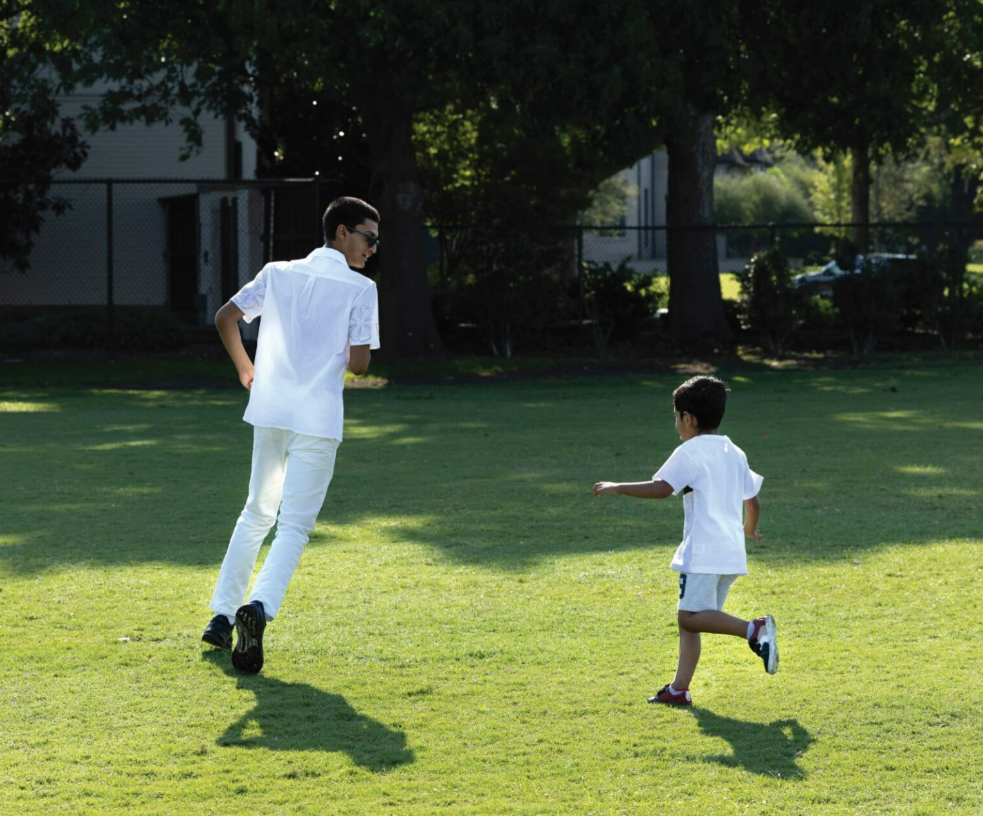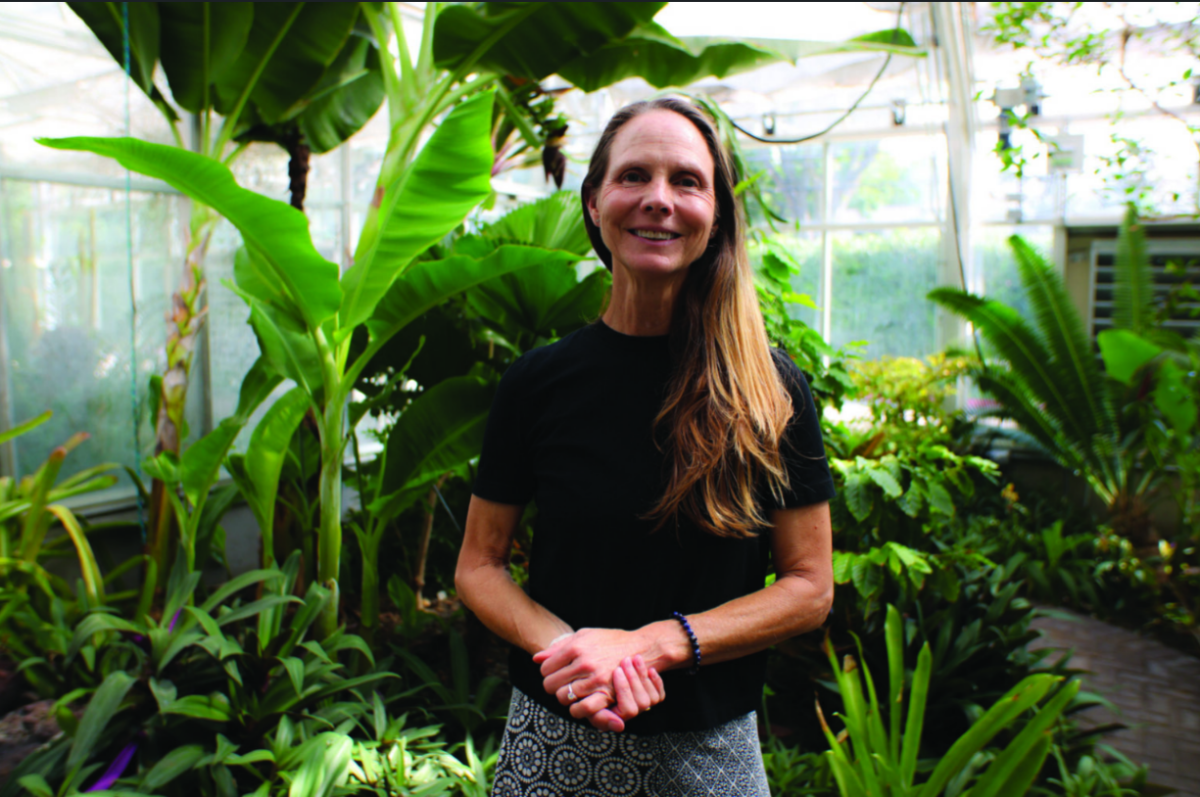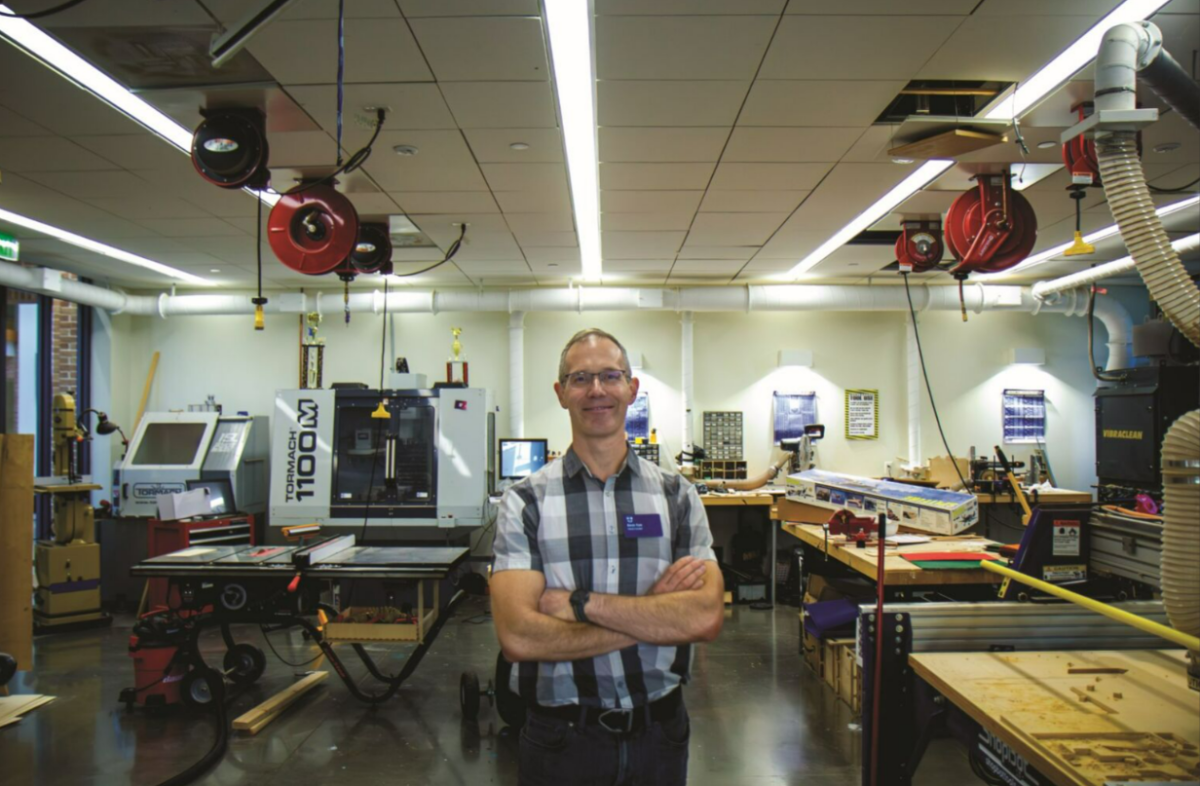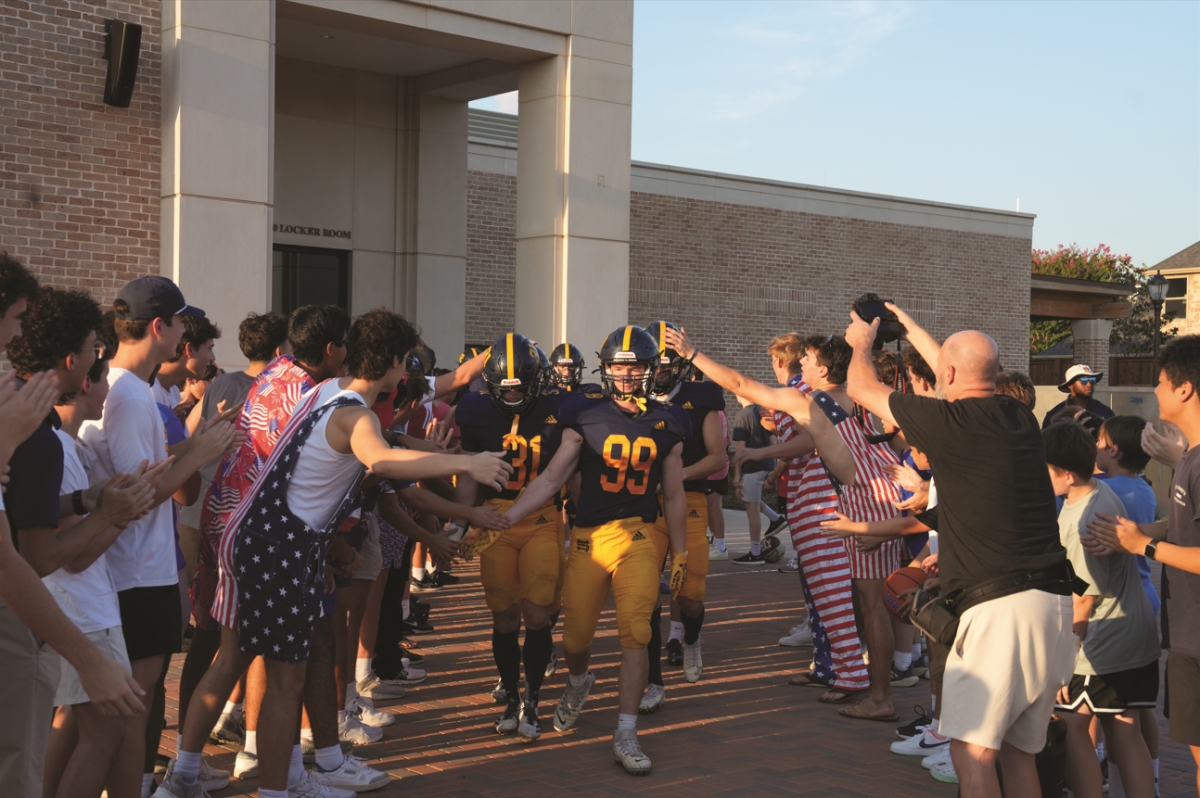In the stressful science building with students yelling and studying, a natural peace can be found swimming in circles. Three aquaria sit beside a noisy hub for students, housing fish species from far corners of the world.
Director of Environmental Studies Dan Northcut ‘81 manages most of the life centers on campus like the greenhouse and fish tanks. Because the school brings a company in to clean the tanks, he simply oversees the well-being of the fish, which includes checking the surface of the water to ensure that the pumps are oxygenating.
“I feed them three times a week, and then a company comes every other week to do cleaning, changing filters, maintaining the chemical balances and so forth,” Northcut said.
The fish tanks were first built in 2002, only a few years after the environmental science program started. A family donated several fish tanks to the school, so the department decided to put them to use.
“We always struggled with trying to get something out in that lobby area that was interesting,” Northcut said. “We (decided that) we could set up these tanks as different ecosystems. And for a long time before the renovation of the building… we had four aquaria (of which) two were saltwater and two were freshwater.”
After the renovation, one tank was lost, containing the Texas native fish. Currently, the three tanks hold saltwater and freshwater fish. The two outside tanks hold the saltwater fish, and the middle tank holds the freshwater fish. They feature species from the tropical saltwater regions to the rocky reefs.
“We don’t want to put more stress on the environments,” Northcut said. “So we try and get them from places like the Dallas North Aquarium where they can source them more locally from people who are breeding them for the aquarium. The species themselves are from lots of places: the cichlids are all South American and Central American, and the reef fish are all tropical fish.”
Northcut hopes that the fish impacts not just the aesthetic of the science lounge but also the mood of anyone who walks by.
“Having an aquarium and having fish is kind of calming,” Northcut said. “It’s nice to have an aspect of nature inside.”
Down the hall from the fish tanks and inside a classroom, another reptile is in a tank, but rather than swimming, it slithers. Biology instructor Ryan Brewer is the caretaker of the school’s snake, a relatively new addition to campus.
While Brewer is the current owner of the snake, he has not always been the primary caretaker. Originally purchased in 2019, the snake’s original owner was Dr. Bonnie Flint, a former Science Instructor.
The snake was a core part of Flint’s classroom experience and was something that all the students loved. Under her ownership, the snake actually had a different name—Bartlebee. However, in 2021, Flint left the school, leaving the snake’s future uncertain.
But Brewer decided to step up and move the large tank into the back of his classroom, giving the snake a new home and, with his students’ help, his new name—Kobe.
“My second year, the sixth graders were trying to come up with names, but then we settled on Kobe, which is the same name now,” Brewer said. “Its full name is Kobe Duncan Garnett because all three of those basketball players joined the Hall of Fame at the same time.”
Kobe, a melanistic corn snake, is part of the genus Pantherophis and belongs to a family of snakes that also includes the common rat snakes found across the south and east of the United States.
Kobe has become an extremely valuable member of the classroom, with the students running into the class and going to his large glass tank in the back of the class before even putting their stuff down.
“Before they even greet me, my sixth graders go back and look at Kobe,” Brewer said. “Just checking to see what he’s doing, which is usually nothing. But they are always asking, ‘Oh, what is Kobe doing?’ and things like that.”
Not only have the students enjoyed the presence their reptilian friend brings to the classroom, but teachers and parents alike have also visited Brewer’s science classroom for the sole purpose of seeing the snake.
But ultimately, the biggest impact is seen in the lives of the students. Kobe’s presence in the classroom has brought a source of joy to the kids.
“Kobe is just good fun to have in the classroom and they are just always wondering what he is doing,” Brewer said. “The sixth graders just love him.”







